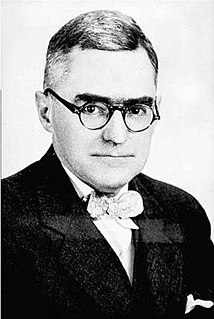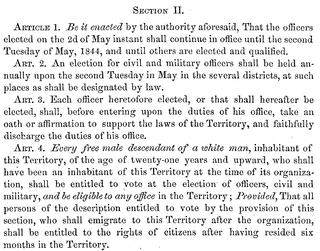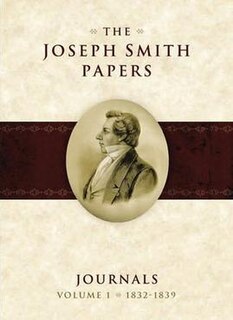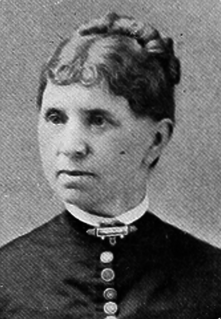
The Oregon Trail was a 2,170-mile (3,490 km) east-west, large-wheeled wagon route and emigrant trail in the United States that connected the Missouri River to valleys in Oregon. The eastern part of the Oregon Trail spanned part of what is now the state of Kansas and nearly all of what are now the states of Nebraska and Wyoming. The western half of the trail spanned most of the current states of Idaho and Oregon.
The Western History Association (WHA), a 501(c)(3) non-profit organization, was founded in 1961 at Santa Fe, New Mexico by Ray Allen Billington et al. Included in the field of study are the American West and western Canada. The Western History Association was headquartered from 2012-2017 at the University of Alaska, Fairbanks. As of 2018 the WHA was hosted on the campus of the University of Nebraska at Omaha with the support of the Department of History, College of Arts and Sciences.

The Champoeg Meetings were the first attempts at formal governance by European-American and French Canadian pioneers in the Oregon Country on the Pacific Northwest coast of North America. Between 1841 and 1843, a series of public councils was held at Champoeg, a settlement on the French Prairie of the Willamette River valley in present-day Marion County, Oregon, and at surrounding settlements. The meetings were organized by newly arrived settlers as well as Protestant missionaries from the Methodist Mission and Catholic Jesuit priests from Canada.

Jesse Applegate was an American pioneer who led a large group of settlers along the Oregon Trail to the Oregon Country. He was an influential member of the early government of Oregon, and helped establish the Applegate Trail as an alternative route to the Oregon Trail.

The Oregon Spectator, was a newspaper published from 1846 to 1855 in Oregon City of what was first the Oregon Country and later the Oregon Territory of the United States. The Spectator was the first American newspaper west of the Rocky Mountains and was the main paper of the region used by politicians for public debate of the leading topics of the day. The paper's motto was Westward the Star of Empire takes its way.

The history of Oregon, a U.S. state, may be considered in five eras: geologic history, inhabitation by native peoples, early exploration by Europeans, settlement by pioneers, and modern development.

William Henry Gray (1810–1889) was a pioneer politician and historian of the Oregon Country in the present-day U.S. state of Oregon. He was an active participant in creating the Provisional Government of Oregon. Gray later wrote the book A History of Oregon, 1792-1849 and was instrumental in the establishment of the Oregon Pioneer Society.

The Provisional Government of Oregon was a popularly elected settler government created in the Oregon Country, in the Pacific Northwest region of North America. Its formation had been advanced at the Champoeg Meetings since February 17, 1841, and it existed from May 2, 1843 until March 3, 1849, and provided a legal system and a common defense amongst the mostly American pioneers settling an area then inhabited by the many Indigenous Nations. Much of the region's geography and many of the Natives were not known by people of European descent until several exploratory tours were authorized at the turn of the 18th and 19th centuries. The Organic Laws of Oregon were adopted in 1843 with its preamble stating that settlers only agreed to the laws "until such time as the United States of America extend their jurisdiction over us". According to a message from the government in 1844, the rising settler population was beginning to flourish among the "savages", who were "the chief obstruction to the entrance of civilization" in a land of "ignorance and idolatry".

Lewis Ankeny McArthur, known as "Tam" McArthur, was an executive for Pacific Power and Light Company. He was also the secretary for the Oregon Geographic Board for many years and the author of Oregon Geographic Names. His book, now in its seventh edition, is a comprehensive source of information on the origins and history of Oregon place names. It is a standard reference book in libraries throughout Oregon and the Pacific Northwest. Tam McArthur Rim in the Cascade Mountains is named in his honor.
William Stacy was an officer of the Continental Army during the American Revolutionary War, and a pioneer to the Ohio Country. Published histories describe Colonel William Stacy's involvement in a variety of events during the war, such as rallying the militia on a village common in Massachusetts, participating in the Siege of Boston, being captured by Loyalists and American Indians at the Cherry Valley massacre, narrowly escaping a death by burning at the stake, General George Washington's efforts to obtain Stacy's release from captivity, and Washington's gift of a gold snuff box to Stacy at the end of the war.

The Organic Laws of Oregon were two sets of legislation passed in the 1840s by a group of primarily American settlers based in the Willamette Valley. These laws were drafted after the Champoeg Meetings and created the structure of a government in the Oregon Country. At the last Champoeg Meeting in May 1843, the majority voted to create what became the Provisional Government of Oregon. Laws were drafted by the committee and accepted by a popular vote in July. These laws were reformed by a second version in 1845.
William Grant Bagley was a historian specializing in the history of the Western United States and the American Old West. Bagley wrote about the fur trade, overland emigration, American Indians, military history, frontier violence, railroads, mining, and Utah and the Mormons.

The Joseph Smith Papers is a project researching, collecting, and publishing all manuscripts and documents created by, or under the direction of, Joseph Smith (1805-1844), the founder of the Latter Day Saint movement. The documents, which include transcriptions and annotations, have appeared both online and in printed form. The Church History Department of The Church of Jesus Christ of Latter-day Saints sponsors the project; the department's imprint, the Church Historian's Press, publishes the website and the printed volumes.

Eva Emery Dye was an American writer, historian, and prominent member of the women's suffrage movement. As the author of several historical novels, fictional yet thoroughly researched, she is credited with "romanticizing the historic West, turning it into a poetic epic of expanding civilization." Her best known work, The Conquest: The True Story of Lewis & Clark (1902), is notable for being the first to present Sacagawea as a historically significant character in her own right.
Richard Ian Kimball is a professor of history at Brigham Young University (BYU). He is a leading expert on the history of sports, especially as it relates to the Latter-day Saints. His book Sports in Zion: Mormon Recreation 1890-1940 was published by the University of Illinois Press and has been reviewed by such widely recognized journals as the Western Political Quarterly and the American Historical Review. Essentially the same book has also been marketed by Deseret Book under the title To Make True Latter-day Saints: Mormon Recreation in the Progressive Era.

Frances Auretta Fuller (Barritt) Victor was an American historian and historical novelist. She has been described as "the first Oregon historian to gain regional and national attention." She was known for her books about the West and especially Oregon history.

The Oregon Geographic Names Board is responsible for recommending names for geographic features in the state of Oregon. The board submits its recommendations to the United States Board on Geographic Names for approval. In 1959, administrative responsibility for the board was transferred from the state government to the Oregon Historical Society.

The Pioneer is a thirteen-foot-tall bronze sculpture located on the University of Oregon campus in Eugene, Oregon, United States. It was the artistic work of Alexander Phimister Proctor, commissioned by Joseph Nathan Teal, a Portland attorney. A ceremony celebrated its unveiling on May 22, 1919. It included attendance from persons all across the state, the majority of enrolled students, and a special section of the crowd was reserved for the remaining settlers. T. G. Hendricks and his granddaughter removed the canvas cover, unveiling the statue.
Brown, Not White: School Integration and the Chicano Movement in Houston is a 2005 book by Guadalupe San Miguel, Jr., published by the Texas A&M University Press. Brown, Not White discusses Chicano activism in Houston, Texas during the 20th century.
The Portland Bee was a Republican newspaper in Portland in the U.S. state of Oregon in the late 19th century. It was launched in November 1875, the same year as the Portland Daily Bulletin disincorporated; like the Bulletin, it had both daily and weekly editions. It initially had two daily editions, and circulated 1,000 free copies.















